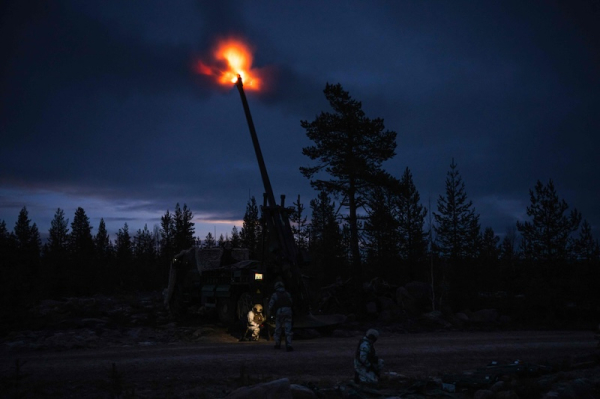
French soldiers from the 93rd mountain artillery regiment operate the Camion Equipe d’un Systeme d’Artillerie, also known as CAESAR, a French 155 mm, 52-caliber self-propelled howitzer that can fire 39/52 caliber NATO-standard, during the NATO Exercise Dynamic Front, on November 17, 2024 near Rovaniemi, in Finnish Lapland. LEHTIKUVA / AFP
- Next Article Espoo helps skilled immigrants break into job market
The presence of Nato troops in Finnish Lapland is expected to increase Russian intelligence activity, according to a new report from the Finnish Defence Forces (FDF). The report suggests that Russia is particularly interested in monitoring Nato’s military operations and equipment stationed in Finland.
Last week, Finland’s Defence Minister Antti Häkkänen confirmed that Nato’s Forward Land Forces (FLF) will be based in Rovaniemi and Sodankylä.
These units, present in several Nato countries, will conduct joint training with Finnish forces and provide a rapid response capability in case of a security crisis.
The Finnish Security and Intelligence Service (Supo) has warned that Russian and Chinese intelligence agencies have increased their focus on Finland since it joined Nato. Supo has tightened surveillance at key infrastructure sites, including the Port of Kemi, where Nato troops and equipment arrive for exercises.
Finnish military officials have also reported regular drone reconnaissance flights near military bases. Brigadier General Pekka Turunen said that such incidents occur about once a month, though he did not specify the parties responsible. Military personnel have been instructed to report suspicious activity, and access controls at some garrisons have been tightened.
Russia’s intelligence gathering methods are becoming more varied and direct. The FDF report states that pro-Russian social media groups are being used to recruit informants. Russian operatives may also pose as journalists or researchers to collect information.
Finland’s Nato membership has heightened Russian interest in Finnish military activities, including defence cooperation and the development of Nato command structures. The FDF believes Russia is likely to increase efforts to disrupt Western unity through hybrid operations, such as manipulating migration flows or targeting energy infrastructure.
While there is no immediate military threat to Finland, the FDF warns that Russia may strengthen its forces near the Finnish border once the war in Ukraine ends. The report suggests that troop numbers in the Leningrad Military District could increase from 30,000 to 80,000.
Despite these concerns, Häkkänen said Finland’s Nato integration is progressing well. Janne Kuusela, Director General at the Ministry of Defence, emphasised that the FLF presence is not just symbolic but part of a well-rehearsed plan to ensure Finland can receive allied support if needed.
Nato’s growing role in Finland has also led to discussions on increasing defence spending. Finland, which already meets Nato’s two percent GDP defence target, is considering further investments. Häkkänen stressed that Europe must take greater responsibility for its own defence as the US shifts focus to China.
HT
- Next Article Espoo helps skilled immigrants break into job market
Source: www.helsinkitimes.fi
